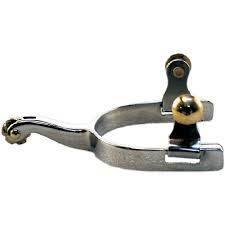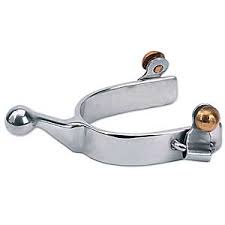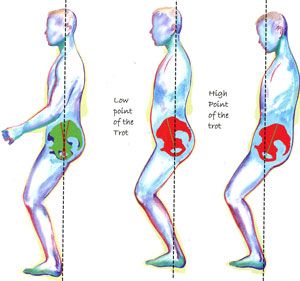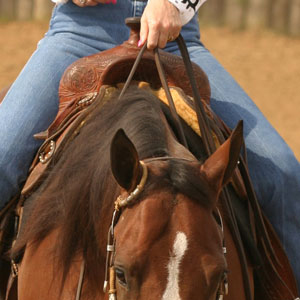I am what one might call a “minimalist” rider, in that I like to ride with as little tack and as few extra tools as possible. It annoys me to carry a crop. I do not want to deal with an extra set of reins. I won’t ride with a martingale unless I absolutely have to. And for pretty much my whole life, I’ve managed to avoid spurs.
Much of this preference stems from just liking to keep things simple. Why add stuff on that you don’t need? But there was also an underlying feeling that if I couldn’t get the horse to do what I wanted on my own, using only the aides that come from my body, then I didn’t deserve to call myself a real rider.
I realize now that this is dumb. It’s the same self-bullying nonsense that I was putting on myself when I came back to riding four years ago in Brooklyn, when I was fighting the anxiety of riding a horse through a traffic circle and into a city park and I thought that dismounting when I felt unsafe was admitting weakness that meant I’d never be strong enough to succeed.
In the last couple of weeks, I’ve been working with Dunnie on some more subtle challenges — getting some more vertical and lateral flexion (making his head carriage more supple and soft), and making distinctions between responding to my leg asking him to move different parts of his body (his shoulder for a spin; his side for a side-pass; and his hip for loping off on the correct lead and getting flying changes). I’ve also been working on slowing him down at the lope so that we can really make a marked change between our big fast and our small slow circles.
One of the biggest challenges in the head carriage and the speed control endeavors has been that it requires me to use a lot more rein than I usually do. In keeping with my minimalist riding sensibilities, I also typically aim for using as little hand as possible. But that’s just not effective here. And unfortunately, when using enough rein to get Dunnie to do what I want him to do (hold his head correctly, or slow down at the lope), the side effect is that he breaks gait, or if we’re walking, just stops entirely. At the lope, that has required a tremendous amount of leg effort to keep him going, and finding the balance where we aren’t stop-and-go has been mostly elusive.
My trainer suggested spurs a while ago. I wasn’t as closed off to the idea as I would have been before, but I didn’t have the right kind.

When I started riding here my first trainer suggested that I get a pair — but the kind I got, while pretty minimal, still had a rowel, which is the spiky, revolving disk at the end that you see in all the cowboy movies. Mine had a dull edge, but nonetheless, the couple of times I’ve tried riding with them, Dunnie got pretty agitated. I didn’t feel comfortable with them.
But this week I finally got myself a different kind — a ball spur, without the rowel.

These have a rounded, dull end that is much gentler. It feels more like a thumb pushing into your side and doesn’t have the pinch potential that even the dull-edge rowels have.
Last night I rode with my new spurs for the first time. They take some getting used to. You don’t want to use the spur every time you put your leg on the horse, so I’m having to learn to feel where the spurs end in relation to my bootheel. I’m also really conscious of trying to use them as subtly as I can so Dunnie doesn’t become inured to the sensation.
But using this new tool led to a really great breakthrough. Before, using my reins effectively to get the right head set meant that my natural leg aides (my legs) were not enough of a counterbalance. Now, with a very very slight touch of the spur, I can tell Dunnie that even though I’m pulling on the reins, I don’t want him to stop — I just want him to round his back and push off with his back legs to keep going.
When you’ve been trying and trying and just not getting something right, it can certainly be frustrating. I’ve learned a lot of patience since starting this new discipline, realizing that the horse isn’t going to do something perfectly the first time you ask for it, just like it takes people a lot of practice to master a skill. So I don’t get wound up or upset about it being difficult, or taking longer than I expect it to. But I have to say, that moment when all of sudden you do the tiniest thing differently and it all magically comes together — where you get it, and you also can tell that your horse gets it — in that moment, all the work and all the frustration is completely worth it.




